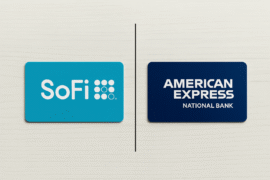This article may contain references to products or services from one or more of our advertisers or partners. We may receive compensation when you click on links to those products or services. Nonetheless, our opinions are our own.
The information presented in this article is accurate to the best of our knowledge at the time of publication. However, information is subject to change, and no guarantees are made about the continued accuracy or completeness of this content after its publication date.
- Key Highlights
- Introduction
- Understanding Non-Monetary Benefits for Employees
- The Essence and Importance of Non-Monetary Rewards
- Comparing Non-Monetary and Monetary Benefits
- A Beginner’s Guide to Implementing Non-Monetary Benefits
- Top 10 Non-Monetary Benefits That Make a Difference
- Flexible Working Hours and Remote Work Opportunities
- Professional Development and Career Advancement Programs
- Conclusion
- Frequently Asked Questions
- Recommended Reads
Key Highlights
- Non-monetary benefits play a crucial role in employee satisfaction and engagement.
- These benefits can sometimes be more effective than monetary incentives in boosting employee morale.
- Implementing non-monetary benefits requires careful planning and a deep understanding of employee needs.
- It’s essential to align benefits with company culture and values.
- Examples of such benefits include flexible work arrangements, professional development opportunities, and employee recognition programs.
- By offering a mix of these perks, companies can create a more rewarding and fulfilling work environment for their employees.
Introduction
Money is important, but forward-thinking companies recognize the immense value of non-monetary benefits. These benefits cater to employees’ diverse needs and aspirations, fostering engagement, loyalty, and a positive workplace culture.
Understanding Non-Monetary Benefits for Employees
Non-monetary benefits encompass various perks beyond salary. They aim to enhance employees’ overall well-being, job satisfaction, and work-life balance. Examples include flexible work hours, wellness programs, and professional growth opportunities tailored to different employee needs.
Employee recognition also plays a significant role in motivation. Acknowledging employees’ efforts through verbal appreciation, public recognition, or awards fosters a sense of value and job satisfaction.
The Essence and Importance of Non-Monetary Rewards
Non-monetary rewards help companies attract and retain top talent while cultivating an engaged and productive workforce. These benefits extend beyond financial compensation, creating a lasting impact on employees’ professional and personal lives.
Recognizing and rewarding employees through non-monetary means shows that a company values its workforce beyond their productivity. A strong employee onboarding experience also plays a key role in setting the foundation for long-term engagement and satisfaction. This approach nurtures a supportive work environment, boosts morale, and keeps employees committed to organizational success.
By investing in meaningful rewards, companies foster employee loyalty, reduce turnover, and enhance their reputation as desirable employers. Ultimately, this strengthens the organization with a motivated and dedicated team.
Comparing Non-Monetary and Monetary Benefits
Both non-monetary and monetary benefits contribute to a well-rounded compensation package but differ in their impact and effectiveness.
| Feature | Non-Monetary Benefits | Monetary Benefits |
|---|---|---|
| Focus | Employee well-being, work-life balance, personal growth | Financial compensation, performance-based rewards |
| Impact | Long-term satisfaction, increased loyalty, enhanced morale | Short-term motivation, financial security |
| Examples | Flexible work arrangements, wellness programs, and professional development opportunities | Salary increases, bonuses, stock options |
Balancing these two types of benefits allows companies to create a comprehensive compensation strategy that attracts, motivates, and retains top talent.
A Beginner’s Guide to Implementing Non-Monetary Benefits
Identifying What Employees Value
To attract and retain top talent, companies must understand what employees truly value beyond their paycheck. Developing an effective non-monetary benefits program requires insights into employee preferences.
Employee surveys, focus groups, and one-on-one interviews are excellent ways to gather feedback on work-life balance, career aspirations, and job satisfaction. This information helps companies tailor benefits that genuinely resonate with their workforce.
Offering flexible work schedules, fostering professional growth, and recognizing employee achievements are some ways to create a compelling benefits program.
Necessary Resources and Tools for Implementation
Successfully implementing non-monetary benefits requires careful planning and resource allocation. Fortunately, various tools and platforms can streamline the process.
Online platforms offer customizable programs for employee recognition, wellness initiatives, and learning management. Project management software can also help track the effectiveness of different benefits programs.
Additionally, seeking guidance from experts in employee benefits can provide valuable insights and support throughout the implementation process.
Step 1: Assessing Employee Needs and Preferences
Before launching a new benefits program, it is essential to understand employees’ specific needs. Addressing these needs enhances engagement, retention, and overall job satisfaction.
Start by conducting employee surveys to gather clear insights into their preferred non-monetary benefits. Follow up with focus groups and individual interviews to explore their motivations and career aspirations further.
By actively listening to employees and incorporating their input into decision-making, companies can design benefits programs that genuinely enhance workplace satisfaction and performance.
Step 2: Designing Your Non-Monetary Benefits Program
Once employee preferences are identified, the next step is crafting a well-structured non-monetary benefits program. The selected perks should align with company culture and values.
Offering a variety of benefits that address different needs—such as flexible work arrangements, professional development opportunities, wellness programs, and recognition initiatives—ensures inclusivity.
Regularly evaluating the effectiveness of the benefits program and collecting employee feedback allows for necessary adjustments and improvements over time.
Top 10 Non-Monetary Benefits That Make a Difference
Non-monetary benefits are essential for attracting and retaining top talent. Providing flexible work arrangements, professional development opportunities, and meaningful rewards helps create a positive workplace.
Some of the most impactful non-monetary benefits include:
- Flexible working hours and remote work options
- Health and wellness programs
- Paid time off and sabbaticals
- Employee recognition programs
- Mentorship and coaching programs
- Volunteer time off
- Commuter benefits
- College tuition assistance
- Team-building activities and company events
- Personalized career growth opportunities
Flexible Working Hours and Remote Work Opportunities
One of the most sought-after benefits today is flexible work arrangements, including remote work. Employees value the ability to set their schedules and work from various locations, especially when seeking a better work-life balance.
Adopting a hybrid work model benefits both employees and companies by enhancing productivity and satisfaction while reducing commuting costs.
Professional Development and Career Advancement Programs
Investing in employee growth and career development is a key strategy for retaining top talent. When companies support professional growth, employees are more likely to stay and contribute meaningfully.
Opportunities for career advancement include:
- Workshops and training programs
- Mentorship and coaching initiatives
- Tuition reimbursement for further education
- Participation in industry conferences and networking events
Recognizing and celebrating employees’ achievements also fosters a culture of learning and continuous development.
Conclusion
Non-monetary benefits are crucial for employee satisfaction and retention. By offering flexible work arrangements, remote work options, learning opportunities, and career growth pathways, companies can create a positive work environment that retains top talent.
Understanding employee priorities and implementing tailored non-monetary benefits programs foster engagement and loyalty. A strong focus on these benefits improves workplace morale and ensures a thriving and motivated workforce.
By investing in the holistic well-being of employees, organizations can enhance their success and reputation as desirable employers.
Frequently Asked Questions
How do non-monetary benefits improve employee satisfaction?
Non-monetary benefits contribute to job satisfaction by addressing employees’ emotional and professional needs. They boost morale, enhance retention, and support intrinsic motivation, leading to a more positive and fulfilling work environment.
How can companies incorporate non-monetary benefits into their employee retention strategies?
Organizations can integrate non-monetary benefits into retention strategies by conducting employee surveys, developing personalized career growth plans, and promoting a healthy work-life balance.
What are the key challenges companies may face when implementing non-monetary career advancement programs?
Challenges may include resistance to change, limited resources for training and development, and difficulties in measuring the impact of such programs on overall employee performance.

Reviewed and edited by Albert Fang.
See a typo or want to suggest an edit/revision to the content? Use the contact us form to provide feedback.
At FangWallet, we value editorial integrity and open collaboration in curating quality content for readers to enjoy. Much appreciated for the assist.
Did you like our article and find it insightful? We encourage sharing the article link with family and friends to benefit as well - better yet, sharing on social media. Thank you for the support! 🍉
Article Title: Top 10 Non-Monetary Benefits That Employees Value Most
https://fangwallet.com/2025/02/15/top-10-non-monetary-benefits-that-employees-value-most/The FangWallet Promise
FangWallet is an editorially independent resource - founded on breaking down challenging financial concepts for anyone to understand since 2014. While we adhere to editorial integrity, note that this post may contain references to products from our partners.
The FangWallet promise is always to have your best interest in mind and be transparent and honest about the financial picture.
Become an Insider

Subscribe to get a free daily budget planner printable to help get your money on track!
Make passive money the right way. No spam.
Editorial Disclaimer: The editorial content on this page is not provided by any of the companies mentioned. The opinions expressed here are the author's alone.
The content of this website is for informational purposes only and does not represent investment advice, or an offer or solicitation to buy or sell any security, investment, or product. Investors are encouraged to do their own due diligence, and, if necessary, consult professional advising before making any investment decisions. Investing involves a high degree of risk, and financial losses may occur including the potential loss of principal.
Source Citation References:
+ Inspo












































